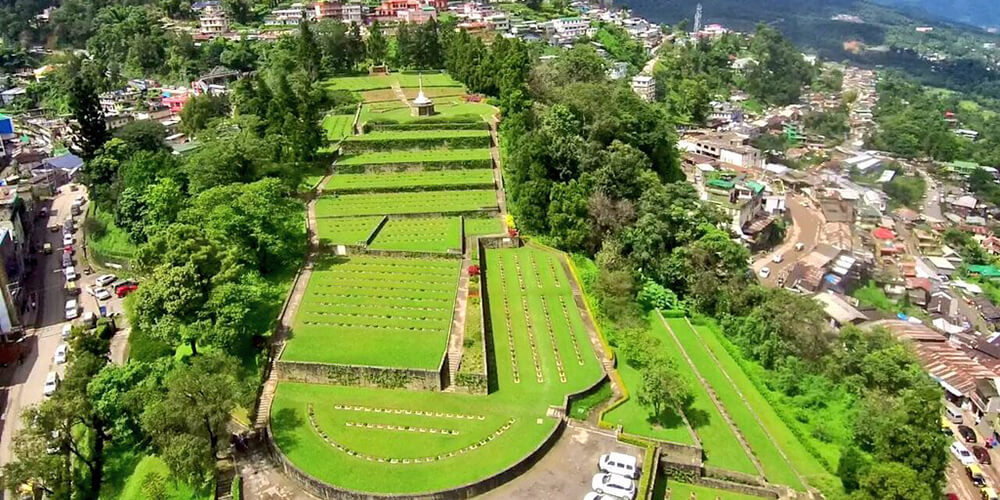

The Kohima War Cemetery, located in Kohima, the capital of Nagaland, India, is an important historical site that commemorates the fallen soldiers of the Allied forces who fought in the Battle of Kohima during World War II. The battle took place between April and June of 1944 and was a turning point in the Burma Campaign, halting the Japanese advance into India.
Constructed by the Commonwealth War Graves Commission, the cemetery marks the final resting place for more than 1,420 Commonwealth servicemen. It is divided into two parts; the main cemetery contains the graves of those who died in battle, and the second section, known as the Children's Cemetery, holds the graves of the children of British personnel stationed in Kohima.
The cemetery is renowned for its immaculate upkeep and the famous inscription on the memorial of the 2nd British Division which reads, "When you go home, tell them of us and say, for your tomorrow, we gave our today."
The Kohima War Cemetery is a site of pilgrimage for veterans, their families, and those interested in World War II history. It stands as a poignant reminder of the price of freedom and the horrors of war, as well as a symbol of peace and reconciliation.
Visitors to the site can take guided tours to learn about the significance of the Battle of Kohima and the stories of the soldiers who rest there. The site is meticulously landscaped, featuring a mix of vibrant flowers and evenly-spaced headstones, which offers a serene environment for reflection.
In recent years, there has been a growing interest in wartime tourism, with the Kohima War Cemetery attracting visitors not only for its historical importance but also for the opportunities for personal remembrance and education. Annually, ceremonies are held to commemorate the Battle of Kohima, particularly on Remembrance Day and the anniversary of the battle, drawing international and domestic visitors.
The Nagaland Tourism department has also been actively promoting war-related heritage sites as part of cultural tourism, offering a deeper insight into the state's involvement in the war and its impact on the region's history. This form of tourism often combines visits to the cemetery with cultural experiences that showcase the unique Naga heritage and traditional practices.